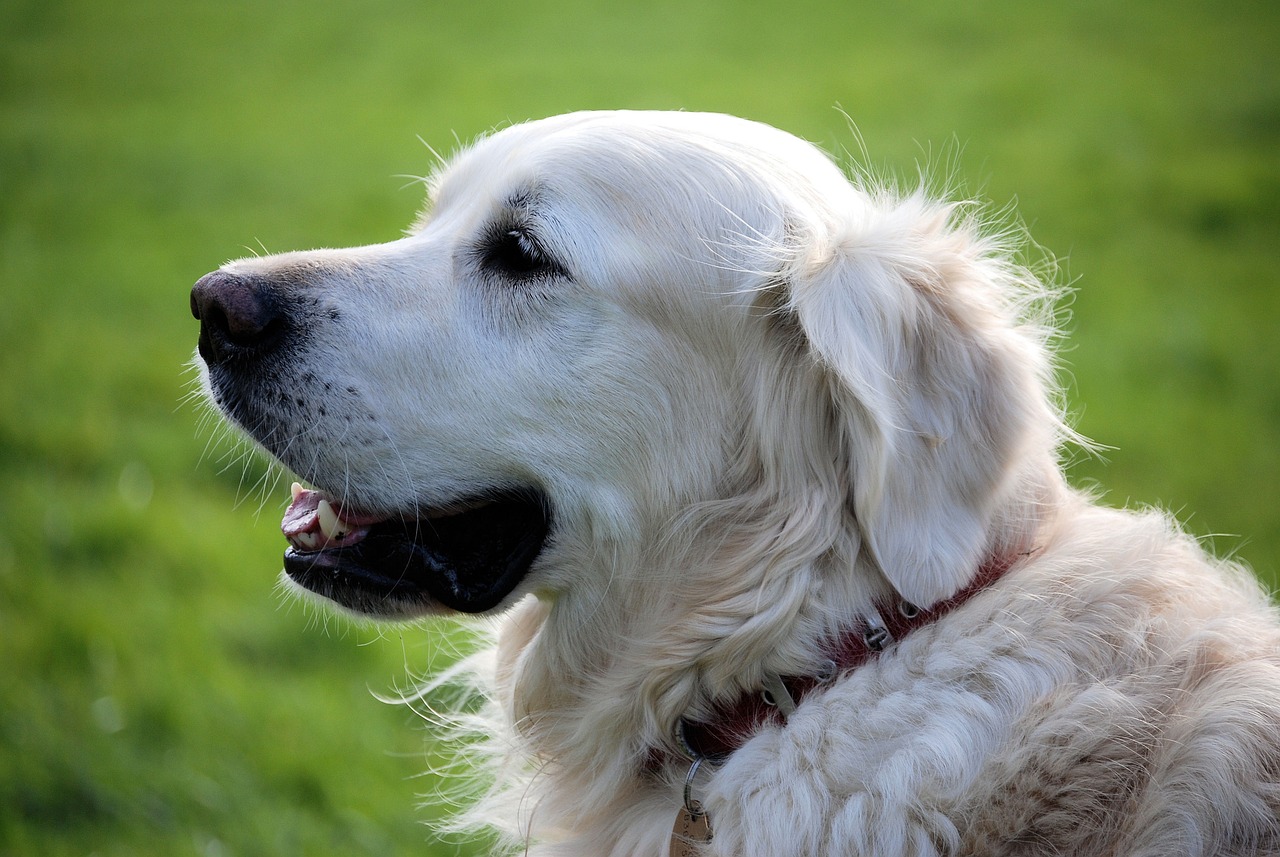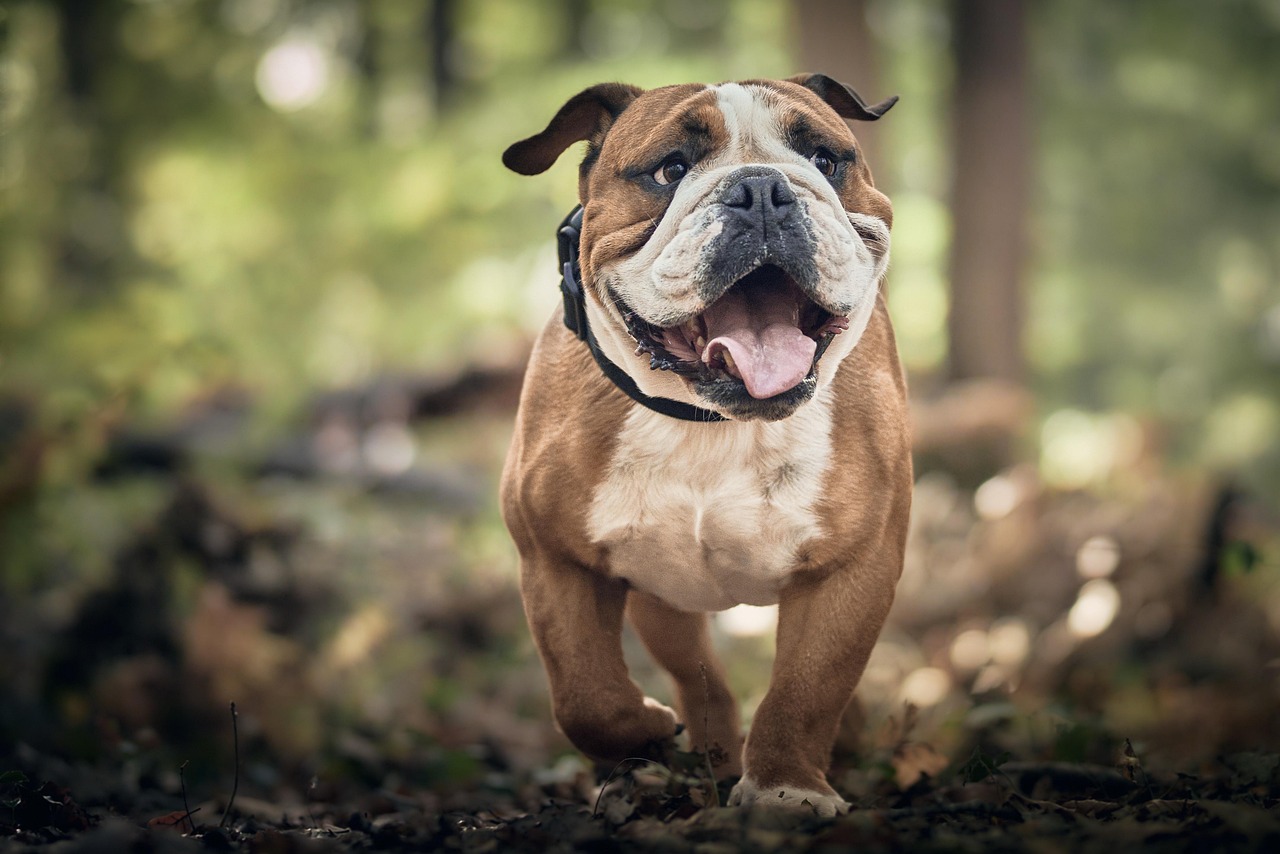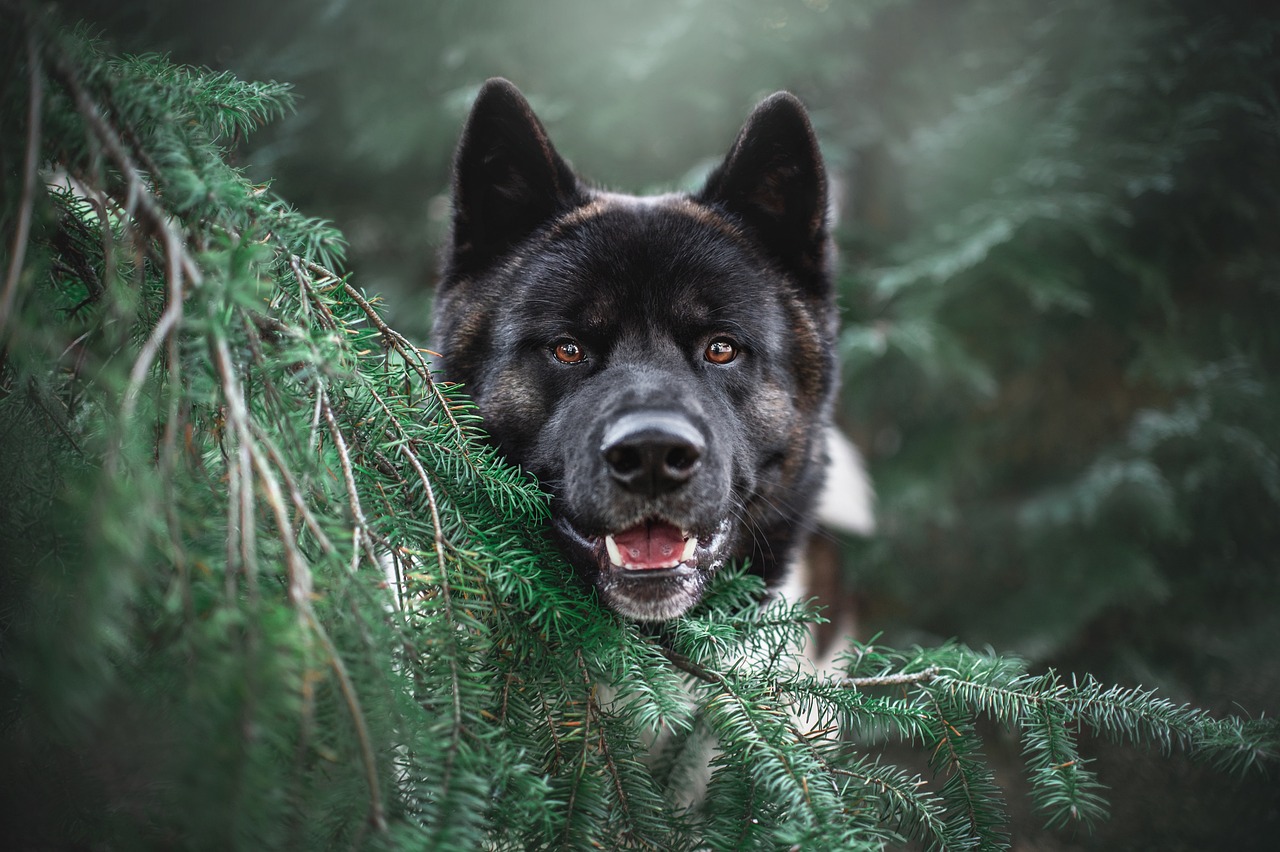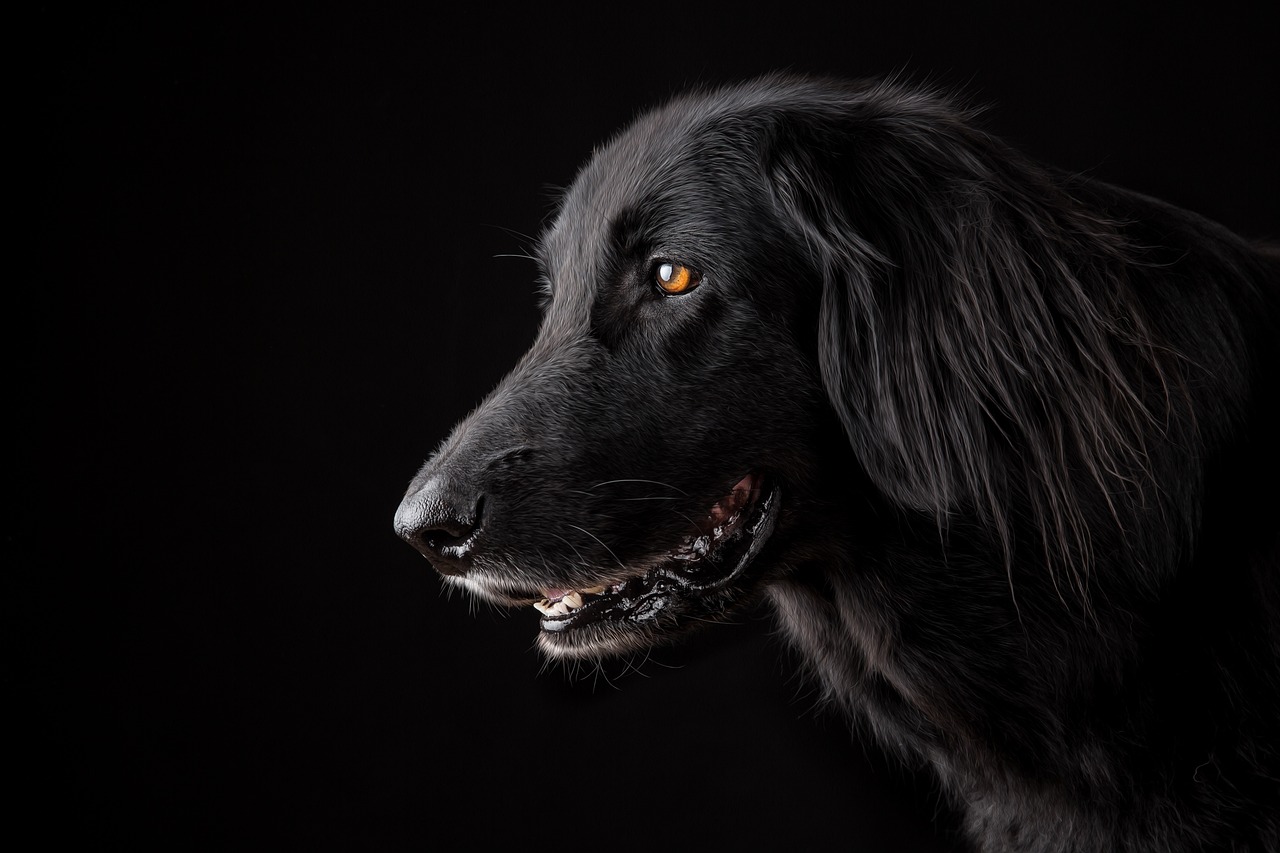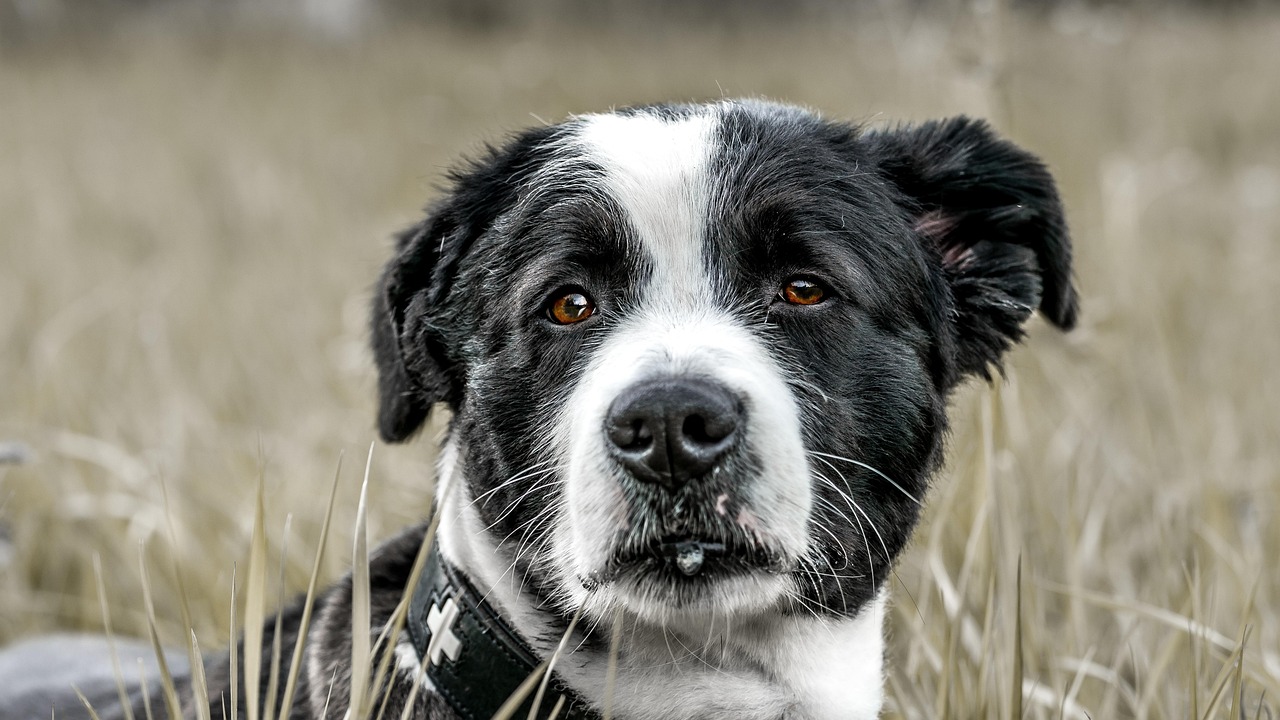This article provides a comprehensive analysis of the bite force of various dog breeds, offering insights into their strength and potential impact. It aims to inform readers about the characteristics of popular breeds.
Understanding Dog Bite Force
Dog bite force is a crucial metric that is measured in pounds per square inch (PSI). This measurement indicates the strength of a dog’s bite, which can vary significantly across different breeds. Understanding how bite force is calculated and its significance is essential for potential dog owners and enthusiasts alike.
Factors Influencing Bite Force
- Size and Weight: Larger dogs generally possess stronger bite forces due to their size and muscle mass. This correlation between physical attributes and bite strength is vital for understanding breed capabilities.
- Jaw Structure: The design and structure of a dog’s jaw play a significant role in its biting power. Different breeds exhibit various jaw types that can enhance or diminish their biting capabilities.
- Age and Health: A dog’s age and overall health can influence its bite strength. Younger dogs may have more vitality, while older dogs might experience a decline in strength.
Behavioral Aspects of Dog Bites
Understanding the behavioral aspects that lead to dog bites is crucial. Factors such as aggression, fear, and territoriality can significantly impact a dog’s bite force and behavior.
Top Breeds by Bite Force
Some breeds are renowned for their impressive bite forces. For example:
- Rottweiler: Known for its powerful bite, the Rottweiler is one of the strongest breeds, combining strength with loyalty.
- American Pit Bull Terrier: This breed is often noted for its strong bite force, with a temperament that can be both protective and affectionate.
Comparative Analysis of Bite Forces
By comparing the bite forces of various breeds, we can gain insights into their differences and similarities. A comparative chart can provide a visual representation of these strengths.
Conclusion: The Importance of Responsible Ownership
Responsible dog ownership is paramount, especially for breeds with strong bite forces. Training, socialization, and understanding a breed’s characteristics are essential for ensuring safe interactions with these powerful animals.

Understanding Dog Bite Force
Dog bite force, quantified in pounds per square inch (PSI), serves as a crucial metric for assessing the strength of a dog’s bite. This measurement is not merely a number; it reflects the physical capabilities of different breeds and can significantly impact interactions between dogs and humans. Understanding how bite force is calculated and its implications is essential for potential dog owners and enthusiasts alike.
To measure bite force, scientists typically use specialized equipment that gauges the pressure exerted by a dog’s jaw when biting down on an object. This data is then converted into PSI, providing a standardized way to compare different breeds. For example, a Rottweiler may exhibit a bite force of around 328 PSI, making it one of the strongest breeds, while a Chihuahua’s bite force is significantly lower, around 6 PSI.
Knowing a dog’s bite force is vital for several reasons:
- Safety: Understanding the potential strength of a dog’s bite can help owners take necessary precautions, especially in households with children or other pets.
- Training: Dogs with higher bite forces may require more rigorous training and socialization to ensure they interact safely with others.
- Breed Characteristics: Different breeds have unique traits that influence their behavior and bite strength, impacting how they should be managed and cared for.
Factors such as size, jaw structure, and even age can influence a dog’s bite force. Larger breeds generally possess stronger jaws, while the design of their jaw can affect how force is applied. Additionally, a dog’s health and age can alter its biting capability over time.
In conclusion, understanding dog bite force is not just about numbers; it encompasses safety, training, and responsible ownership. By recognizing the implications of bite strength, dog owners can foster safer and more harmonious relationships with their canine companions.

Factors Influencing Bite Force
When it comes to understanding a dog’s bite force, several critical factors come into play. These elements can help potential dog owners and enthusiasts make informed decisions regarding breed selection and ownership responsibilities.
- Size and Weight: Generally, larger dogs possess a more powerful bite force. This is primarily due to their greater muscle mass and physical strength, which allows them to exert more pressure when biting. For instance, breeds like the Rottweiler and German Shepherd are known for their substantial size and correspondingly strong bite forces.
- Breed Characteristics: Different breeds have evolved with unique traits that impact their bite strength. For example, American Pit Bull Terriers and Doberman Pinschers are renowned for their strong jaws and high PSI ratings, which reflect their historical roles in guarding and protection.
- Jaw Structure: The anatomical design of a dog’s jaw significantly influences its biting capabilities. Breeds with wider, more robust jaws tend to have a stronger bite force compared to those with narrower jaws. This structural variation is crucial in understanding how different breeds interact with their environment.
- Age and Health: A dog’s age can affect its bite force. Young, healthy dogs typically exhibit stronger bites, while older dogs or those suffering from health issues may experience a decrease in biting strength. Regular veterinary check-ups can help maintain a dog’s overall health and biting capabilities.
- Behavioral Factors: A dog’s temperament and behavior also play a role in bite force. Aggression, fear, and territorial instincts can lead to heightened bite force during stressful situations. Understanding these behavioral aspects is essential for managing a dog’s interactions with people and other animals.
By considering these factors, potential dog owners can better understand the implications of owning a breed with a strong bite force. This knowledge fosters responsible ownership and enhances safety for both the dog and the community.
The Role of Size and Weight
is a crucial factor when evaluating a dog’s bite force. Generally, larger dogs tend to possess a more powerful bite due to their significant size and muscle mass. This article delves into the relationship between a dog’s physical attributes and its biting capabilities.
Research indicates that the bite force of a dog is not solely determined by its size but is also influenced by various anatomical factors. For instance, larger breeds such as the Rottweiler and the Mastiff have been observed to exert a bite force that can exceed 500 PSI (pounds per square inch). This exceptional strength is attributed to their robust jaw structure and strong musculature.
In contrast, smaller breeds, while they may have sharp teeth, typically exhibit a lower bite force. For example, a Chihuahua’s bite force averages around 100 PSI, which is significantly less than that of larger breeds. However, it is essential to note that bite force does not always correlate with aggression; many larger breeds are known for their gentle temperament.
Additionally, the weight of a dog plays a vital role in its overall strength. Heavier dogs often have greater muscle mass, which contributes to a stronger bite. This is particularly evident in breeds that were historically bred for protection or work, such as the German Shepherd and the Belgian Malinois. Their physical attributes not only enhance their bite strength but also their ability to perform tasks that require endurance and agility.
Understanding the implications of size and weight on bite force is critical for potential dog owners. It informs decisions regarding breed selection, training, and safety measures. As responsible pet owners, it is essential to recognize that while larger dogs may have a stronger bite, their behavior can be managed through proper training and socialization.
In conclusion, while size and weight significantly influence a dog’s bite force, they are part of a broader spectrum of factors that include jaw structure and temperament. By comprehensively understanding these elements, owners can foster a healthy and safe environment for both their pets and the community.
Jaw Structure and Design
is a critical aspect of understanding a dog’s biting capabilities. The anatomy of a dog’s jaw varies significantly among different breeds, contributing to their unique bite forces. This section delves into the various jaw types and how they influence a dog’s ability to exert pressure when biting.
Dogs possess different jaw structures, including brachycephalic, mesocephalic, and dolichocephalic types. Each type has distinct characteristics that affect their biting strength:
- Brachycephalic breeds, such as Bulldogs and Pugs, have short, broad skulls. Their jaw structure allows for a strong grip, but they may lack the overall bite force of larger breeds.
- Mesocephalic breeds, like Labrador Retrievers, have a balanced skull shape. This design provides a combination of strength and versatility, allowing them to deliver powerful bites.
- Dolichocephalic breeds, such as Greyhounds, have elongated skulls. While they may have a weaker bite force compared to brachycephalic and mesocephalic breeds, their jaw structure allows for agility and speed in catching prey.
The muscle mass surrounding the jaw also plays a significant role in bite force. Breeds with a more robust musculature, like Rottweilers and Mastiffs, can generate greater pressure due to their strong jaw muscles. Additionally, the alignment of teeth and jaw can affect how force is distributed during a bite, impacting both efficiency and effectiveness.
Overall, the design of a dog’s jaw is not just an anatomical feature; it is a crucial factor that determines how effectively a dog can bite. Understanding these variations helps potential dog owners make informed decisions about breed selection based on their lifestyle and needs.
In conclusion, the relationship between jaw structure and bite force is complex and varies widely between breeds. Owners should consider these factors when evaluating a dog’s suitability for their home and lifestyle.
Age and Health Factors
A dog’s age and overall health are critical determinants of its bite force, influencing both its strength and its ability to bite effectively. As dogs age, their physical condition can change significantly, impacting their muscle mass, jaw strength, and dental health. This section delves into how these factors can evolve over time and affect a dog’s biting capabilities.
Firstly, it is essential to recognize that a dog’s bite force is not static. Younger dogs typically exhibit a stronger bite force due to their higher energy levels, robust muscle development, and healthier teeth. As they transition into adulthood, their bite strength may peak, showcasing their full physical potential. However, as dogs enter their senior years, several health-related issues can arise.
- Dental Health: Older dogs often experience dental problems, such as tooth loss or decay, which can significantly reduce their biting power. A dog with missing teeth may not be able to exert the same force as a fully dentate dog.
- Muscle Atrophy: Age-related muscle loss can weaken a dog’s jaw muscles, diminishing its ability to apply force effectively. Regular exercise and a balanced diet are crucial in maintaining muscle mass as dogs age.
- Joint Issues: Conditions like arthritis can affect a dog’s overall mobility and strength, indirectly influencing its biting ability. Pain or discomfort may lead to a reluctance to bite or engage in play.
Moreover, a dog’s overall health status, including any chronic illnesses or injuries, can also impact its bite force. For instance, dogs suffering from systemic health issues may exhibit lethargy and decreased physical capability, further compromising their biting strength.
In conclusion, both age and health play vital roles in determining a dog’s bite force. Understanding these factors is essential for dog owners to ensure their pets remain healthy and capable throughout their lives. Regular veterinary check-ups and appropriate care can help maintain a dog’s strength and overall well-being, allowing them to retain their natural abilities for as long as possible.
Behavioral Aspects of Dog Bites
Understanding the behavioral aspects that lead to dog bites is essential for both dog owners and the general public. Dog bites can occur for various reasons, and recognizing these behavioral triggers can help prevent incidents and promote safer interactions between dogs and humans.
One significant factor contributing to dog bites is aggression. Aggression can stem from various sources, including fear, frustration, or territorial instincts. Dogs may exhibit aggressive behavior when they feel threatened or when they are trying to protect their territory. It is crucial for dog owners to recognize signs of aggression, such as growling, baring teeth, or stiff body posture, and to address these behaviors through proper training and socialization.
Fear is another critical aspect influencing a dog’s likelihood to bite. A frightened dog may feel cornered and react defensively, leading to a bite as a means of self-protection. Understanding a dog’s fear triggers—such as loud noises, unfamiliar people, or sudden movements—can help owners mitigate these situations. Providing a safe and calm environment can significantly reduce a dog’s anxiety and the potential for bites.
Additionally, territoriality plays a vital role in a dog’s behavior. Dogs are naturally protective of their homes and families, and they may react aggressively when they perceive an intruder. This instinct can be particularly strong in certain breeds. Owners should train their dogs to differentiate between normal visitors and potential threats, promoting a more relaxed demeanor in the presence of strangers.
In conclusion, understanding the behavioral aspects of dog bites—such as aggression, fear, and territoriality—is essential for preventing incidents. By recognizing these triggers and implementing appropriate training and socialization techniques, dog owners can foster a safer environment for both their pets and the community.

Top Breeds by Bite Force
This section provides an in-depth look at some of the most popular dog breeds ranked by their bite force. Understanding the bite force of these breeds is essential for potential owners, as it can influence training, safety, and overall interaction with humans and other animals.
| Breed | Bite Force (PSI) | Characteristics |
|---|---|---|
| Rottweiler | 328 | Rottweilers are known for their loyalty and protective nature. Their strong bite force is a result of their muscular build and powerful jaws, making them excellent guard dogs. |
| American Pit Bull Terrier | 235 | These dogs are known for their strength and agility. Despite their strong bite, they are often gentle and affectionate with their families when properly trained. |
| German Shepherd | 238 | German Shepherds are intelligent and versatile, often used in police and military roles. Their bite force is significant, but they are also known for their trainability. |
| Chow Chow | 220 | Chow Chows have a unique appearance and a strong bite force. They are independent and can be aloof, requiring consistent training and socialization. |
| Doberman Pinscher | 245 | Dobermans are known for their loyalty and protection instincts. Their bite force, combined with their intelligence, makes them effective guard dogs. |
When considering a dog breed, it is crucial to understand that a strong bite force is not solely indicative of aggression. Training, socialization, and responsible ownership play significant roles in how a dog behaves. Potential owners should consider these factors alongside the breed’s bite force to ensure a harmonious relationship.
In conclusion, knowing the bite force of different breeds can help inform potential dog owners about the responsibilities associated with each breed. It is essential to approach dog ownership with a commitment to training and understanding the unique characteristics of each breed.
Rottweiler
The is a breed renowned for its incredible strength and powerful bite force, which is one of the highest among dog breeds. This impressive characteristic is not merely a result of size but is influenced by several anatomical and behavioral factors that contribute to what makes the Rottweiler a formidable canine.
One of the primary reasons for the Rottweiler’s strong bite force is its robust jaw structure. The breed possesses a broad skull and a powerful jaw, allowing it to exert a significant amount of pressure when biting. Studies have shown that the bite force of a Rottweiler can reach up to 328 PSI (pounds per square inch), making it one of the strongest breeds in this regard.
Additionally, the Rottweiler’s muscle composition plays a crucial role in its biting capability. This breed is muscular and well-built, which contributes to its ability to apply force effectively. The combination of strength, size, and jaw mechanics results in a bite that can be both powerful and effective for protection and defense.
Moreover, the temperament of the Rottweiler also influences its bite strength. Rottweilers are known for their loyalty and protective instincts, making them excellent guard dogs. This innate behavior can lead to a more forceful bite when they perceive a threat, further emphasizing the importance of proper training and socialization.
In conclusion, the Rottweiler’s bite strength is a multifaceted trait influenced by its anatomical features, physical strength, and behavioral tendencies. Understanding these characteristics is essential for potential owners to ensure responsible ownership and effective training, which can help mitigate any risks associated with their powerful bite.
| Characteristic | Details |
|---|---|
| Bite Force (PSI) | 328 PSI |
| Jaw Structure | Broad skull and powerful jaw |
| Muscle Composition | Muscular and well-built |
| Temperament | Loyal and protective |
American Pit Bull Terrier
American Pit Bull Terriers are often recognized not only for their impressive strength but also for their distinctive temperament. Understanding these traits is essential for anyone considering bringing this breed into their home. This section delves into the characteristics of American Pit Bull Terriers, highlighting how their physical capabilities relate to their behavior and personality.
American Pit Bull Terriers are known for their powerful bite force, which is estimated to be around 235 PSI. This significant strength is a reflection of their robust jaw structure and muscular build. However, it is important to note that their bite force does not solely define their nature. These dogs are often described as affectionate, loyal, and intelligent, making them excellent companions when properly trained and socialized.
The temperament of an American Pit Bull Terrier is influenced by a combination of factors, including genetics, upbringing, and training. Proper socialization from a young age can lead to a well-adjusted dog that exhibits friendly behavior towards humans and other pets. Unfortunately, negative stereotypes often overshadow their positive traits, leading to misconceptions about their nature.
- Affectionate Nature: American Pit Bull Terriers are known for their love and loyalty towards their families.
- Intelligent and Trainable: They are quick learners, which makes them highly trainable with consistent positive reinforcement.
- High Energy Levels: These dogs require regular exercise and mental stimulation to remain happy and healthy.
In conclusion, the is a breed that exemplifies strength paired with a loving disposition. Understanding their temperament and physical capabilities is crucial for responsible ownership. With the right training and socialization, these dogs can thrive in a family environment, dispelling the myths that often surround them.

Comparative Analysis of Bite Forces
Understanding the bite forces of various dog breeds is essential for prospective dog owners and pet enthusiasts alike. This analysis not only highlights the differences and similarities among breeds but also provides insight into their physical capabilities and potential behavioral traits. In this section, we will present a comparative chart of the most popular breeds, detailing their bite forces and the implications of these measurements.
| Dog Breed | Bite Force (PSI) |
|---|---|
| Rottweiler | 328 PSI |
| American Pit Bull Terrier | 235 PSI |
| German Shepherd | 238 PSI |
| Dogo Argentino | 500 PSI |
| Chow Chow | 220 PSI |
The bite force of a dog is measured in pounds per square inch (PSI), which indicates the pressure exerted by a dog’s jaws. This metric is crucial for understanding not just the physical strength of these breeds, but also their potential for aggression and the responsibility required in their ownership.
For instance, the Rottweiler, known for its powerful build, has a bite force of 328 PSI, making it one of the strongest breeds. In contrast, the American Pit Bull Terrier, with a bite force of 235 PSI, is also recognized for its strength but is often misconceived due to its temperament. The Dogo Argentino tops the chart with an impressive 500 PSI, showcasing the variability among breeds.
In conclusion, the comparative analysis of bite forces among dog breeds serves as a critical tool for understanding each breed’s unique traits. This knowledge empowers potential owners to make informed decisions, ensuring that they choose a breed that aligns with their lifestyle and capabilities.
Understanding the PSI Measurements
is crucial for dog owners and enthusiasts who want to grasp the implications of a dog’s bite strength. PSI, or pounds per square inch, is a measurement that quantifies the force exerted by a dog’s bite. This metric not only reflects the physical power of various breeds but also serves as a practical guide for owners regarding safety and training.
The process of measuring PSI involves specialized equipment that gauges the pressure applied by a dog’s jaws. Typically, this is done using a bite sleeve or a pressure gauge, which captures the force as the dog bites down. The results can vary significantly between breeds, with larger and more muscular dogs often exhibiting higher PSI ratings. For example, breeds like the Rottweiler and the American Pit Bull Terrier are known for their impressive bite forces, which can range from 300 to 700 PSI.
Understanding these measurements is not just about knowing which breeds are strong; it also has practical implications. For dog owners, being aware of a dog’s bite force can help in training and socialization. A breed with a high PSI may require more structured training to ensure they are well-behaved and safe around children and other pets. Additionally, understanding bite force can assist in making informed decisions about breed selection, especially for families or individuals with specific lifestyle needs.
Moreover, the PSI measurement can influence how dog enthusiasts approach their interactions with various breeds. For instance, knowing that certain breeds have a higher bite force may encourage owners to implement more rigorous training protocols and safety measures to prevent any potential incidents.
In conclusion, grasping the significance of PSI measurements provides valuable insights for dog owners. It empowers them to make informed choices regarding training and breed selection, ensuring a safe and harmonious environment for both the dog and its family.
Real-World Implications of Bite Force
Understanding a dog’s bite force is not merely an academic exercise; it has real-world implications for both safety and training. The bite force, measured in pounds per square inch (PSI), can significantly influence how dogs are trained and managed in various environments. For dog owners, trainers, and enthusiasts, recognizing the importance of bite force can lead to better decision-making and responsible ownership.
One of the primary implications of bite force is its impact on training techniques. Breeds known for their strong bite forces, such as the Rottweiler and American Pit Bull Terrier, may require specialized training methods that account for their physical capabilities. These dogs often respond better to positive reinforcement techniques rather than harsh training methods, which could provoke aggressive behavior. Understanding a breed’s bite force can help trainers tailor their approaches to ensure safety and effectiveness.
Moreover, bite force also plays a crucial role in behavior management. Dogs with higher bite forces may exhibit different behavioral tendencies, such as increased territoriality or protective instincts. Recognizing these traits can help owners implement appropriate management strategies, such as socialization and controlled exposure to various environments. This proactive approach can reduce the likelihood of aggressive incidents and foster a more harmonious relationship between dogs and their owners.
Additionally, understanding bite force can inform potential dog adopters about the responsibilities associated with owning certain breeds. It is essential for prospective owners to consider their lifestyle and ability to manage a dog with a strong bite force. This awareness can lead to more informed choices, ultimately resulting in safer interactions between dogs and the public.
In conclusion, the implications of a dog’s bite force extend beyond mere statistics; they influence training, behavior management, and responsible ownership. By understanding these factors, dog owners can create safer environments for their pets and the community.
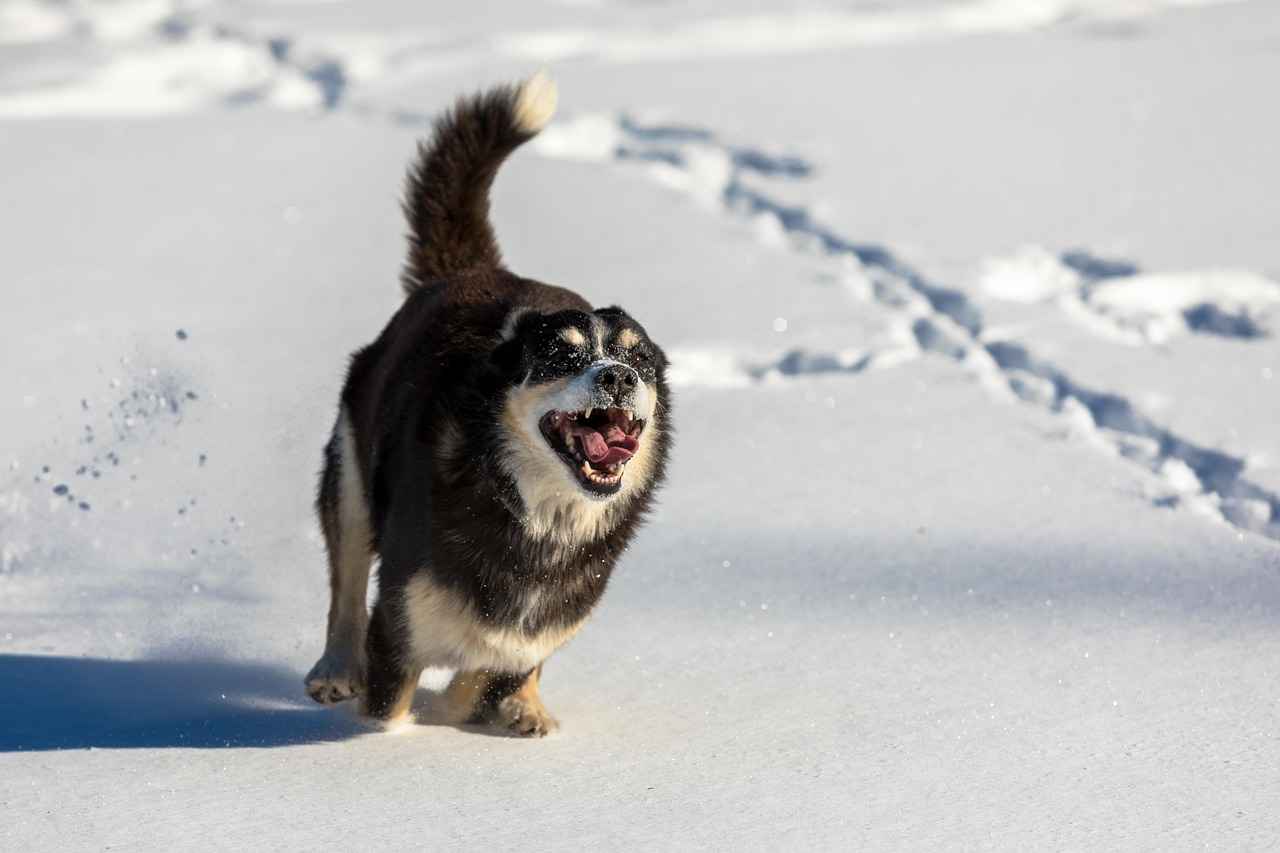
Conclusion: The Importance of Responsible Ownership
Responsible dog ownership is not just a matter of love and companionship; it is a vital commitment that requires knowledge, training, and a deep understanding of a dog’s behavior and characteristics. This responsibility becomes even more critical when considering breeds known for their strong bite forces, such as Rottweilers and American Pit Bull Terriers.
Firstly, training is essential. A well-trained dog is less likely to exhibit aggressive behavior, regardless of its breed. Training should begin at an early age and continue throughout the dog’s life. This ongoing education helps the dog learn acceptable behaviors and reinforces the bond between pet and owner.
Secondly, socialization plays a key role in responsible dog ownership. Exposing dogs to various environments, people, and other animals can significantly reduce the likelihood of fear-based aggression. Socialization should be a gradual process that allows the dog to become comfortable in different situations.
Furthermore, understanding a breed’s characteristics is crucial. Each breed has unique traits that can influence behavior and interactions. For example, breeds with high energy levels may require more physical activity and mental stimulation, whereas others might be more prone to territorial behavior. Being informed about these traits allows owners to tailor their training and care approaches accordingly.
Moreover, responsible ownership includes being aware of the dog’s health and well-being. Regular veterinary check-ups ensure that the dog remains healthy, which can also affect its temperament and behavior. A healthy dog is generally more stable and less likely to exhibit aggression.
In conclusion, the importance of responsible dog ownership cannot be overstated, especially for breeds with strong bite forces. By focusing on training, socialization, and a comprehensive understanding of a breed’s unique characteristics, owners can foster safe and positive interactions, ensuring a harmonious relationship between dogs and their communities.
Frequently Asked Questions
- What is dog bite force and how is it measured?
Dog bite force is the strength of a dog’s bite, measured in pounds per square inch (PSI). It indicates how much pressure a dog can exert with its jaws, which varies significantly among different breeds.
- Which dog breeds have the strongest bite force?
Some of the breeds known for their powerful bite force include the Rottweiler, American Pit Bull Terrier, and German Shepherd. These breeds often rank at the top due to their size, jaw structure, and muscle mass.
- Does a higher bite force mean a dog is more aggressive?
Not necessarily! A dog’s bite force is a measure of strength, not behavior. Aggression can stem from various factors like fear, training, and socialization, rather than just bite force alone.
- How can I ensure my dog is well-behaved despite its bite strength?
Proper training, socialization, and understanding your dog’s breed characteristics are essential. Engaging in positive reinforcement techniques can help manage your dog’s behavior effectively.
- What factors can influence a dog’s bite force?
Several factors can influence a dog’s bite force, including its size, age, health, and jaw structure. Larger, healthier dogs typically have a stronger bite due to their physical attributes.


